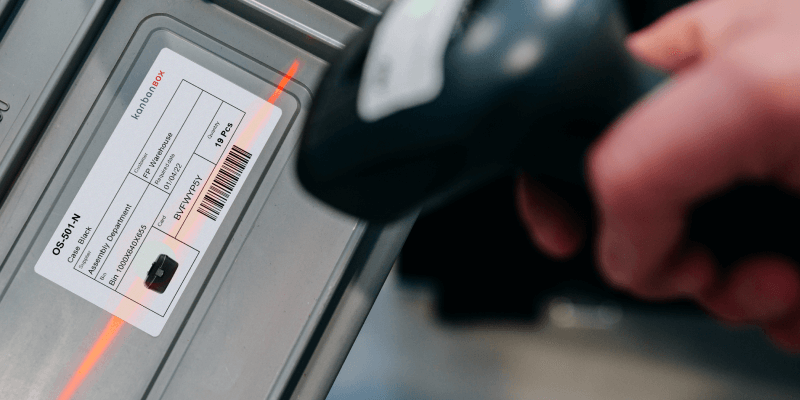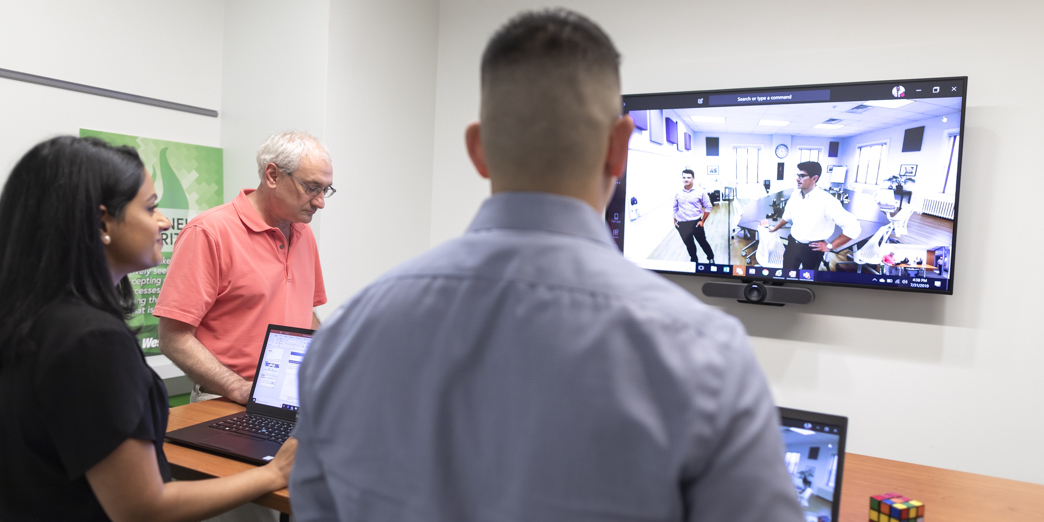
Story of a startup: how to apply lean thinking from the beginning
FEATURE - London-based startup Elastera may represent the example of a company aspiring to be lean from the outset rather than trying to fix itself later through a transformation.
Words: Osvaldo Spadano, founder and CEO, Elastera
When I arrived in the UK in 1997, a young Italian researcher with a background in computers, I decided to take a post-graduate course in management. Soon after the course began, I started to question the foundations of the “management best practices” we were being taught.
At the same time, I saw similar problems at work during the employee performance reviews my employer had me carry out with my staff. There had to be a better way of managing a business, I kept telling myself.
In 2001, I started to work with a startup called Venda. Recently acquired by NetSuite, it is now one of the largest software as a service (SaaS) provider of e-commerce solutions in the world.
Back then, none of today's tools and services were available, including the Cloud. The idea of creating a standard, yet scalable and customizable e-commerce platform to serve many high street and online retailers became a challenge I gladly took on.
The concept of "mass customization" intrigued me, but I quickly realized that the IT industry was still too young. I began to look for an example in other, more mature industries after which I could model a business.
Since funding for Venda was just coming in, we had to decide whether to develop the company’s new platform in one year or two years – the typical timeframe for developing a new platform. In the end, we decided to develop and launch - in less than a year - a basic, simpler version of our product. We didn't know how the e-commerce market would evolve, after all. Nobody did. However, we felt that a more basic product would be a safer, smarter course of action to start with.
We wanted a flexible product with the ability to evolve constantly. To make one, we had to consider how such a solution would work and serve our clients. We began from the process, deploying small, manageable changes every two weeks. That allowed us to respond quickly to client and market demands. Today, we call this process a minimum viable product or MVP. About 70% of the platform's roadmap was based on customer feedback.
Eventually, our efforts proved successful and Venda won very large clients, from BBC Worldwide to British Telecom.
In the meantime, my interest in mass customization had been growing. My search for similar models in more established industries eventually led me to the Japanese carmaker, Toyota. I read everything I could find on the Toyota Production System. I wanted to understand its principles and how this system influences people.
The more I read, the more I understood the flaw I had perceived in the principles taught in management school. I wondered if lean could be the superior management system I had been looking for?
ELASTERA
Everyone talks about being disruptive these days. But what does being disruptive really mean? While the "great idea" is certainly part of it, I think becoming disruptive comes in time, as you consistently find and solve client problems (for example, the small economical cars that the Japanese introduced to the world during an energy crisis many years ago weren't inventions, but an innovation based on the integration of existing engineering features and technologies). This is what lean teaches us, and exactly what set Toyota apart from its competitors.
It's with that spirit that in 2013 my partners, Florinel Chis and Zachary Stevens, and I founded Elastera, a Magento cloud-hosting provider that fully manages e-commerce platforms for retailers.
After identifying a gap in the market, I developed a basic hypothesis: customers will benefit from a "best of both" solution that brings together the advantages of a customized software system approach (DIY) and those of a fully managed solution (SaaS), while eliminating their respective flaws - the hassle of having to do everything by yourself and the impossibility to customize software systems belonging to others.
I then set out to test my assumption by working with an Elastera client to solve their performance and uptime problems using these principles. We did so by using an embryonic version of our solution. That was our minimum viable product, in a way. Even before starting to develop our actual product we already had our first client. Now, that is lean!
We developed our platform over the summer of 2013. By October, we were ready to migrate our client's site onto our new platform. Having worked out the process then, we're much more efficient today: we can now get an enterprise-wide infrastructure up and running in 30 minutes. Everything is standardized, like on the production line of a car plant.
We use several of the principles from DevOps and Infrastructure as Code. The testability, adaptability and modularity of this form of Cloud infrastructure allow us to offer our clients scalability, performance and a continuously improving platform. If a client needs a space for testing, we can quickly assemble a test environment identical to their live environment. For their convenience, we make the infrastructure available to them during normal working days and hours - no need to test at midnight or at other low-traffic times. Since cloud resources are charged based on their usage, you'll save money.
SOLVING COMMON PROBLEMS
Startups have a predisposition to absorb the principles of lean management. There is plenty of cross-pollination between the lean startup movement and traditional lean thinking. But it's now necessary to develop a practical collaboration between the two that goes beyond manifestos presented at conferences and in case studies.
The challenge for lean at the moment is to learn how to communicate and apply its principles to a new generation of businesses, especially in the tech and startup communities.
However, the risks and opportunities startup organizations face are much bigger. The validity and strength of lean principles have been tested, and if startup organizations don't embrace them they are likely to make the same mistakes that traditional businesses have made. To correct those mistakes, they will be forced to go through a transformation at a later stage.
Isn’t it better to do things right from the very beginning? The experiment we're conducting at Elastera aims to determine whether it is possible to start a lean organization, as opposed to making it lean through a later intervention. We are lucky to be supported in this undertaking by Professor Dan Jones, who has been extremely helpful.
We are also embracing the lean startup approach with the support of Eric Ries.
In a way, we are blending lean enterprise principles and methods with the lean startup ones. We have started small, with a few experiments with an “oobeya,” a war room of sorts. This is fundamental for a startup: good solutions require less maintenance, and good maintenance requires less problems to resolve. Using Lean to reduce the amount of problems in our organization is a way of adding value and thereby becoming disruptive.
What I think might be lacking in the lean startup movement is the habit of systematically doing hansei, acknowledging mistakes and deciding to do better. Reflection lies at the heart of lean, and it's what forces you to continuously question your actions. Challenging yourself is the only way to really improve.
At Elastera, we want to build an organization that is in constant transformation, not one that will need to be put forcibly back on track every few years. In order to do this, we need a close relationship with our clients, which we have been able to establish.
Validated learning based on a quantitative approach is not possible for us, because we are a B2B and don't have enough data to work with. What we have developed instead is a direct interaction with our clients. We ask them to tell us everything.
A client recently told me: “We have a real partnership with Elastera, which is difficult to find. Partnership means being on the same side and fighting together, not just a good client-provider relationship.” Another added:“They are incredibly 'available'. I think of them as our consultants in anything to do with Magento, really.”
This level of closeness is of course invaluable because it allows us to fully understand the impact we're having on our clients, and to determine whether or not we are solving their problems.
This approach allows us to be as lean as a startup that is introducing a new product can possibly be. Eric Ries says, “The only way to win is to learn faster than anyone else.” So far, we've been doing it… and it's working well for us.
A Q&A WITH PLANET LEAN
What does an e-commerce platform do?
E-commerce platforms allow retailers to set up their online stores, through which customers can purchase goods. Retailers can also use them to manage products, stock, customers, orders, returns, and so on – integrating them with specialized platforms, such as Warehouse Management Systems (WMS) and Customer Relationship Management (CRM) systems.
What is Magento?
Magento is an open source e-commerce platform. The market leader, it is used by over 200,000 online retailers.
Why is Elastera different from Venda?
Venda pioneered Software as a Service (SaaS) for e-commerce, similarly to what SalesForce did for CRM systems. There are other SaaS e-commerce platforms, including Demandware, Hybris and Shopify.
An online retailer can rent the Venda platform, typically paying a set-up fee and then a monthly fee. Venda manages the infrastructure and continuously develops the software. The merchant does not own the platform/software and can only use the functionalities made available.
Can you tell us more about software as a service and DYI?
Many online retailers want to own the platform they use rather than rent it (this is called DYI), and be free to develop and customize it the way they want, when they want. However, ownership and freedom come with a high price tag and many headaches, because the online retailer will have to run the platform and the infrastructure, develop and maintain the custom features, employ in-house developers or use an e-commerce agency, take care of other relationship such as Payment Service Providers, integrate with other systems, and so on.
SaaS e-commerce providers usually take care of many of these activities. Owning a platform can provide a competitive advantage, but if the infrastructure is not managed well it might turn into an expensive approach with high opportunity costs and possibly slower business growth.
What is the advantage of the cloud?
The cloud provides three key advantages:
1) It can scale infrastructural resources on demand within minutes, so there is no need for over-provision of resources to manage peaks;
2) It reduces costs, because you only pay for what you use;
3) Most importantly - and something that is often underestimated - it allows to manage all of the infrastructure complexity using software, hence giving customers the possibility to standardize and automate.
What is the consequence of a slow platform or downtime for e-retailers?
The performance of a website can have significant impact on online sales. For example, by providing a better platform one of Elastera's clients increased its monthly revenue, initially of £500,000 per month, by 500% in only 18 months.
According to industry figures, 40% of shoppers abandon a site that takes more than three seconds to load and 79% of shoppers who are dissatisfied with a site’s performance are less likely to buy from the same site again.
What is the problem Elastera tries to solve VS the problem Venda tried to solve
Elastera is providing the best of both DIY and SaaS approach, which means:
1) allowing online retailers to own their platform and have the freedom to customize it to meet business and customers needs;
2) fully managing the complexity of running a platform in the cloud, that can scale on demand, be always up, fast and secure. It also means helping developers to focus on adding value to the business, rather than wasting time with the “plumbing and wiring.”
Since Elastera has a standardized and automated infrastructure, managing the platform and its components as if they were code, it can more easily evolve and constantly improve the solution offered to all existing and future clients.
THE AUTHOR

Read more


INTERVIEW – At the recent LPPDE event in England, Planet Lean editor Roberto Priolo sat with Takao Sakai to understand how Toyota approaches product and process development and how the Chief Engineer system works.


FEATURE – This article explores the benefits of an electronic kanban and explains how it enables a truly lean supply chain.


FEATURE – This global designer and manufacturer has leveraged a remote kaizen initiative to keep the flame of continuous improvement burning during the Covid-19 pandemic.


FEATURE – What are the main problems people encounter when running a project? The author ran a survey with 126 people over two years and presents the results of his research in this article.

